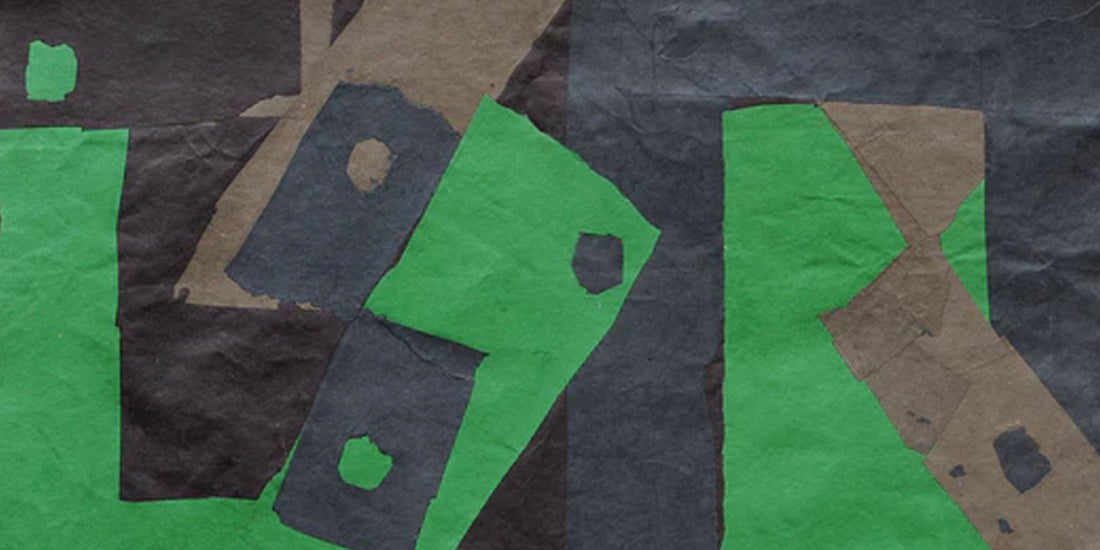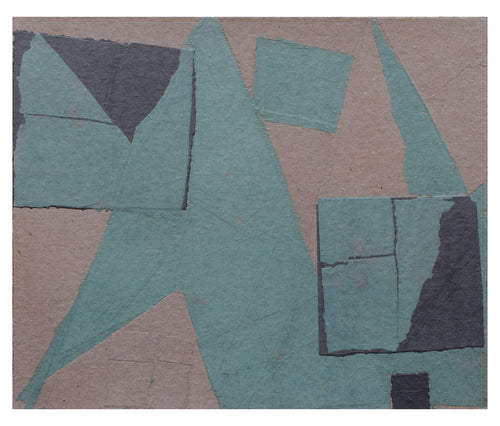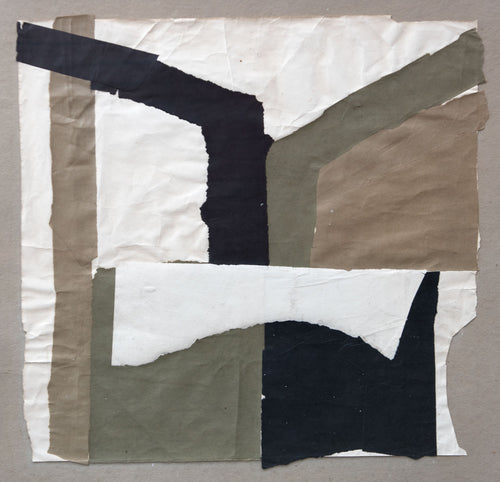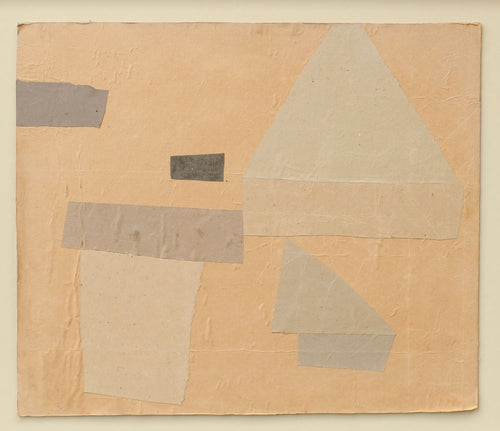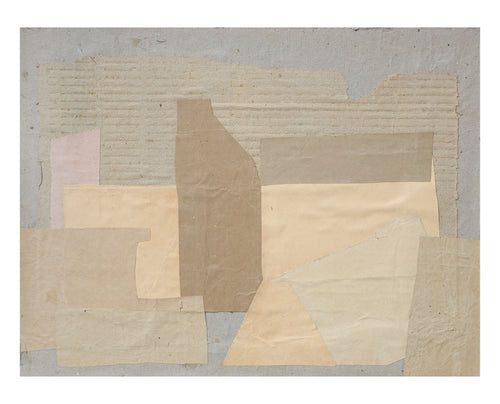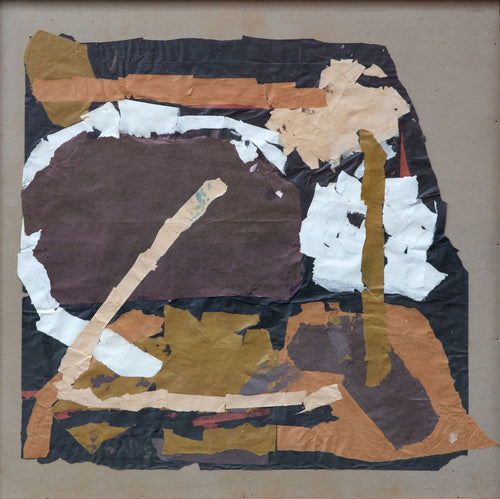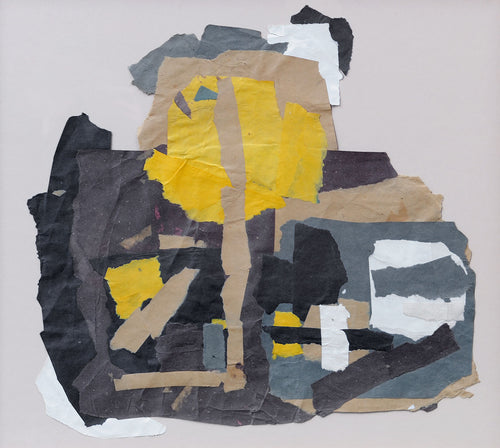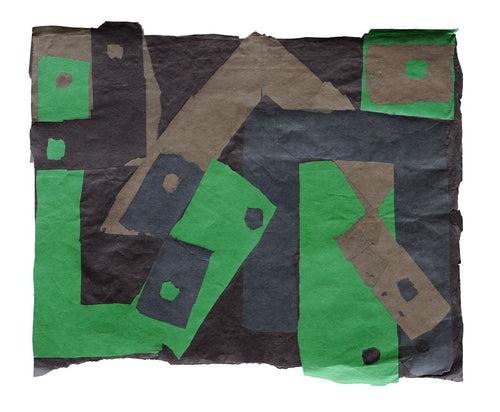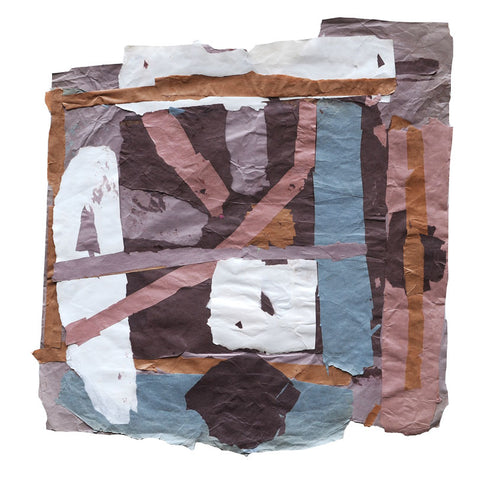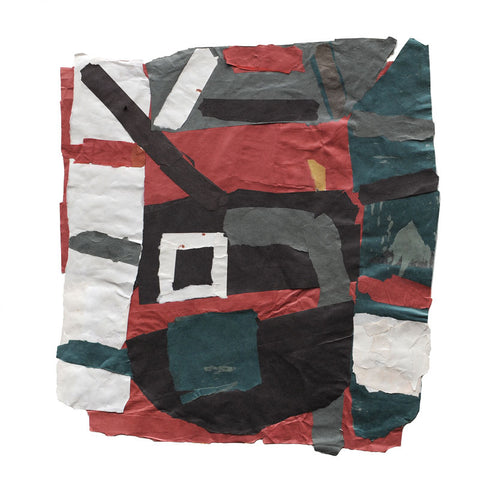
'Blue, Brown, White, Green & Ochre', late paper collage c. 1978-83
A student at Cambridge University, Davison initially intended to become a poet before taking up art as his vocation after a trip to St Ives in 1946, where he stayed with fellow classmate, friend and abstract artist Patrick Heron. It was here, in the same town where he fell in love with his future wife, the artist Margaret Mellis, that Davison first began to draw and paint seriously.
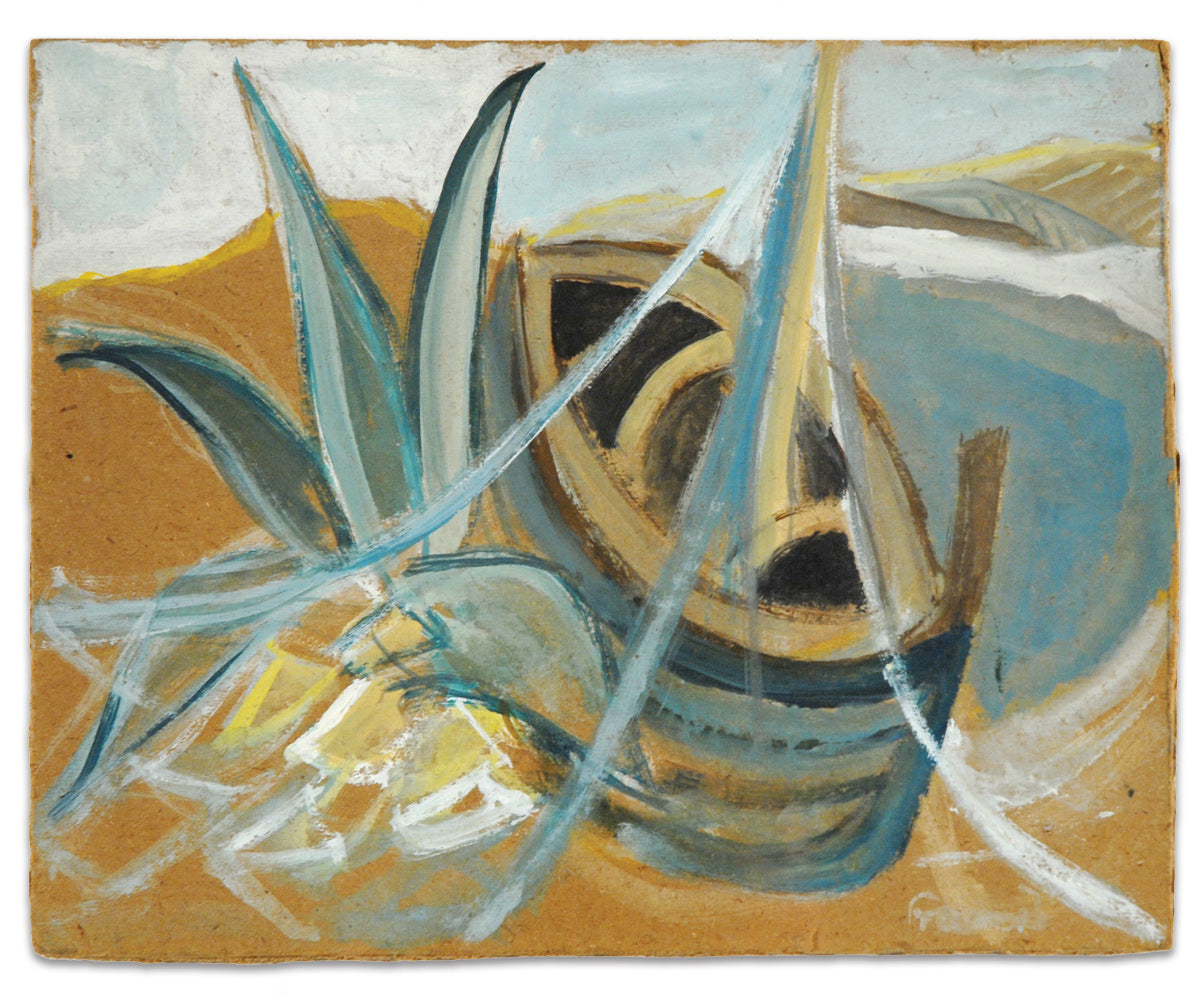
'Boat on the Beach', early oil
The St Ives school – a movement that emerged almost by accident when Mellis and her previous husband, the artist Adrian Stokes, took in Ben Nicholson, Barbara Hepworth, and their three young children to last out the war – centred largely on abstraction, reducing landscapes and interior scenes to simplified planes and blocks of colour. Mellis’ own work, in which still lifes were transformed into textured arrangements of pattern and colour, offered the self-taught Davison an early artistic direction. As she recalled in later years, ‘He only started painting because I did, I was always painting. I had the influence on him. In fact, I brought him up. Then he got frightfully good and went right past.’
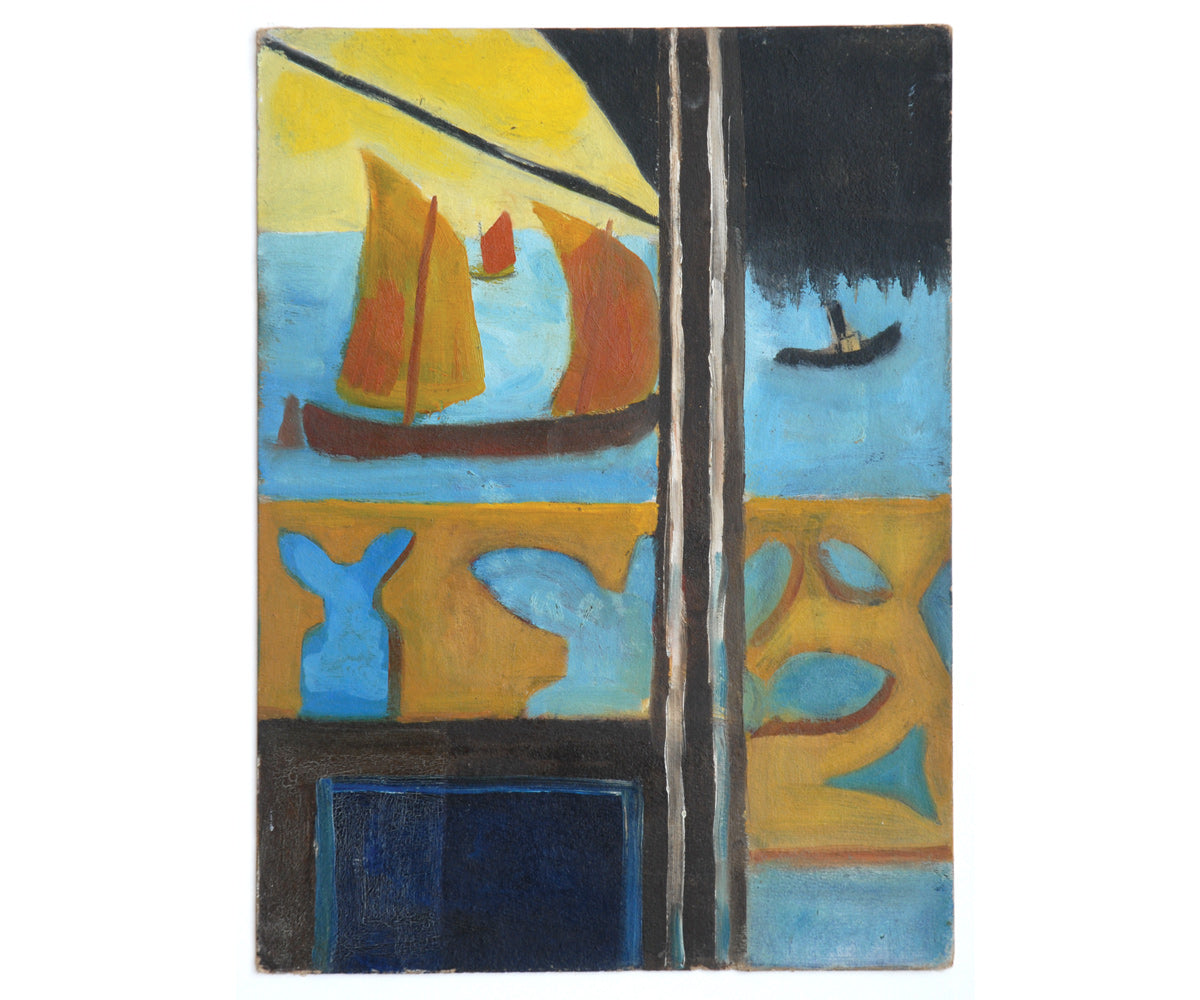
'Balcony in Venice', early oil
Davison’s early oils drew heavily upon the works of the St Ives community. He employed a rich range of gold and ochre, midnight blues, scarlets and turquoise, caught somewhere between the muted, earthy tones of Nicholson and William Scott and the hedonism of Heron’s pinkish reds, oranges, and purples. In approach, his development of abstraction took time: moving to the Cap d’Antibes in France with Margaret in 1947 and then spending their honeymoon in Venice in ’48 (where they would return a year later), his subjects drifted between balcony scenes of gondolas and azure stretches of coastline and beaches. These first painted boards hum with the warmth of Matisse’s fauvist paintings of the same landscape, where the forms of trees, masts, sails and sand are simplified with rough brushstrokes and an obvious, tactile enjoyment of the paint.

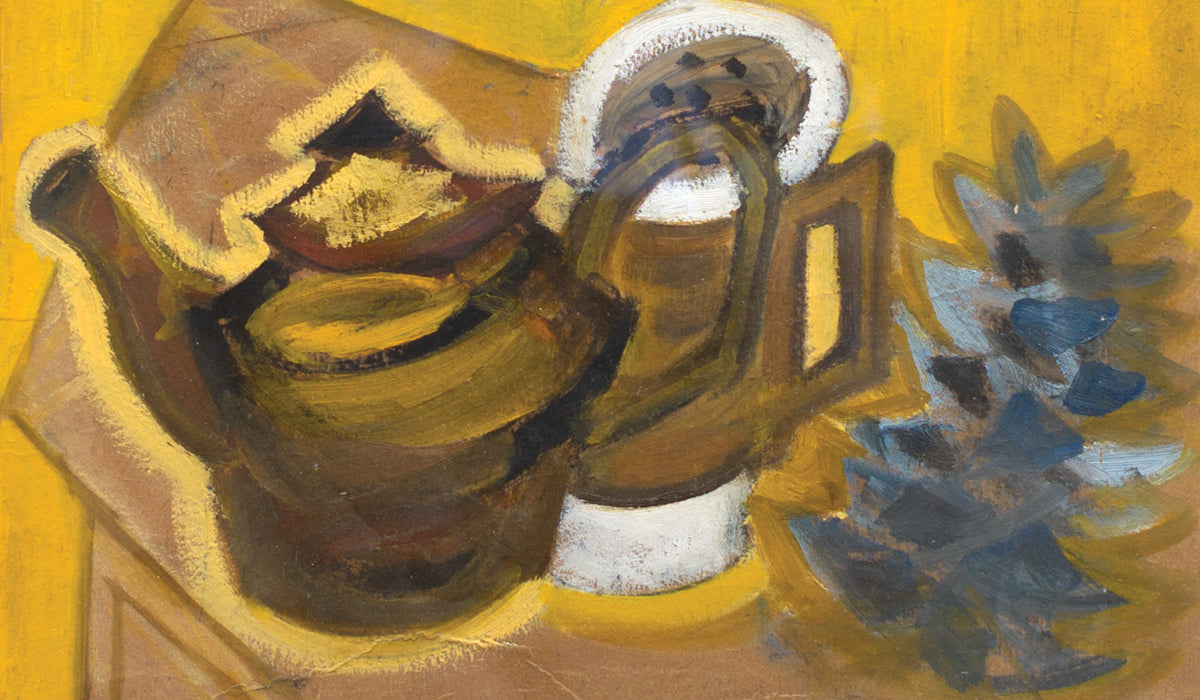
(top) Davison and Mellis in Venice; (bottom) 'Copper Pots', one of Davison's earliest oil paintings c. 1948
In 1950, Davison and Mellis moved back to England, buying a run-down cottage near Diss in Suffolk, one of few houses they could afford. Almost immediately, Davison’s sympathetic palette changed with his surroundings: greys, greens, chocolate blacks and paper bag browns supplanted the bright shades of the Mediterranean. His sense of form was irrevocably altered too, as farmhouses and their surrounding fields were translated into evermore reductive planes and shapes. Within a few years, his approach to paint had become increasingly radical and stylised until, in 1952, he turned his attention solely towards collage.

'House, Essex', c. mid-1950s
In many ways, the abrupt move to collage was a logical step: his last paintings in the early 1950s were increasingly concerned less with paint and more with form and the juxtaposition of lines, colours, and textures. Practically speaking, collage had its benefits: paper scraps were cheaper than oils, and could be stored more easily both before and after assembly. Compositions of shapes could be realised far more quickly too, with the additional ease of being able to rearrange his scraps at will before deciding upon their final position.

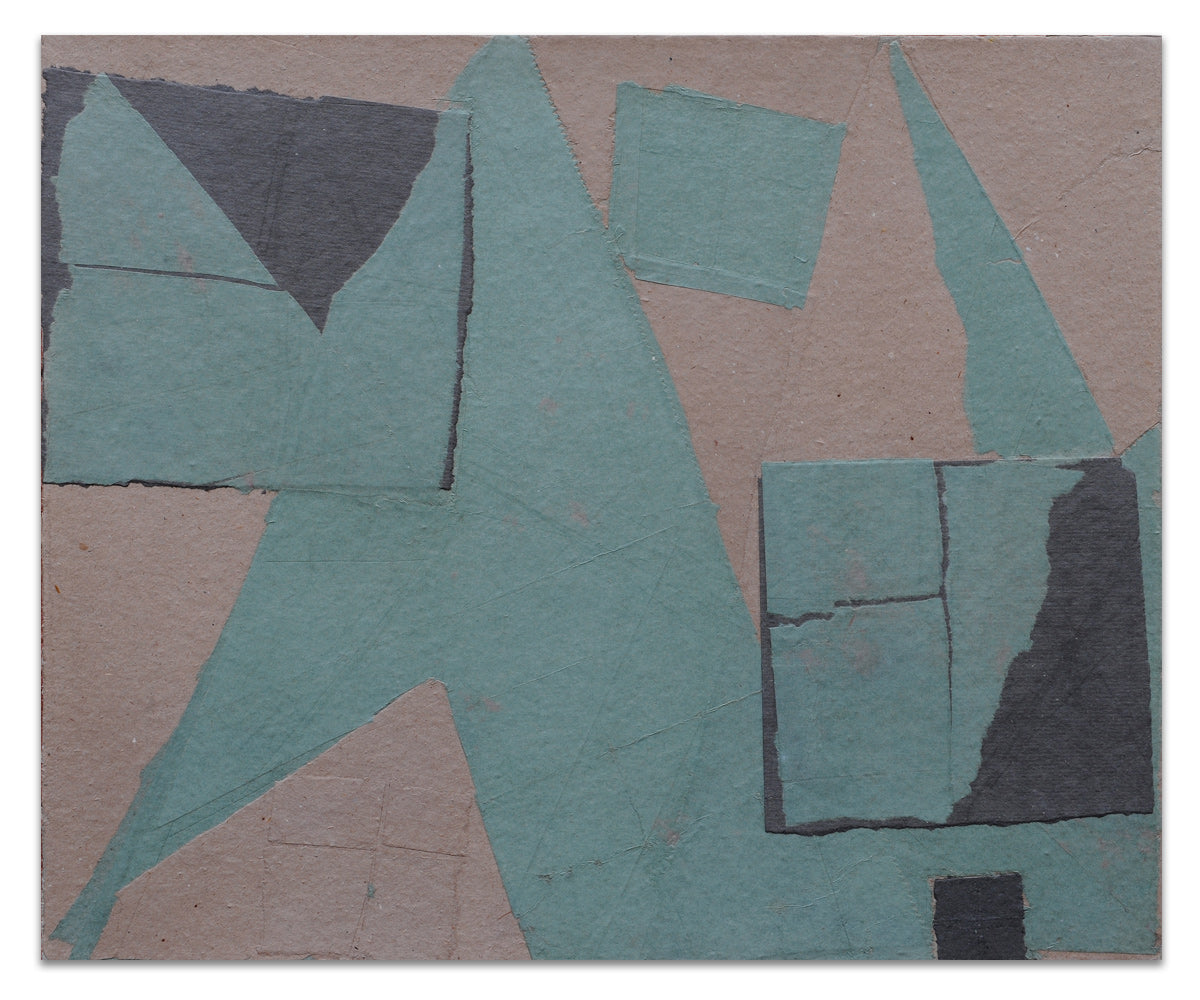
(top) 'House', c. 1950s; (bottom) 'Pointed Roofs', c. 1950s
Davison’s first collages were often small and subdued in colour, typified by drab olive, greys, mustard yellows, and the natural tones of pulp and cardboard, though with time he grew more confident in size and scope. Over the next thirty years he worked tirelessly at his creations, from miniature paper patchworks to colossal six-foot arrangements of harmonious strips, circles and squares of pure colour. He found he worked best within limitations: his paper was always found, used, and never painted, more often torn by hand than attacked with scissors, an ascetic creative vision through which he saw himself as the 'only true collagist'.

'White Rectangle with Red & Blue', c. 1978-84
Though in their feathered edges these works appear haphazard, as if flung together, their configuration was the result of extreme focus and design. Larger lines are often made up from multiple, individual strips of paper, carefully mapping out a direction across the composition. Look more closely and one finds evidence of tiny, punctured holes from drawing pins used to hold pieces in place as a collage was being resolved.

'Torn Paper Collage', c. 1983
Notes found amongst Davison's papers in the years following his death reveal something of the probing nature of these works:
People often ask what is the aim, what is the meaning of the collages, instead of looking to see what has been made with paper instead of paint. So I don’t explain them. I look at them again and see that what was obviously a mess has taken shape…

'Blue & Green Circles & Oblongs', c. 1965-71
…It’s flat, there are empty spaces, there’s slight relief, one piece of paper goes behind, another comes in front. There are false starts, crossings out, suggestions that are not followed up.
This work the paper is doing gradually arrives at something ‘made’, cutting away what is not wanted, adding more and taking away, more of this colour, less of that, simplifying, messing until everything is lost or saved…something modest appears, a satisfactory balance and stillness, a suggestive form.

'Green, Greys, Black with Rivets', 1970
The ‘stillness’ that instils all of Davison’s collages, even his most textured and expansive, derives from a delicate balancing of tone, movement, and direction. The alignment of each element in Green, Greys, Black with Rivets revolves around parallel right angles of green and earthen rectangles, their motion cushioned by the velvet textures of a black paper background. In Small Squares, Grey, Green, White & Mustard, many jostling paper squares are softened by a subtle and restrained palette. The whole is ordered and loose at the same time; linear, but not bound or confined, each green, grey, brown, and white box vibrating against the next.

'Small Squares, Grey, Green, White & Mustard', c. 1965-71
Davison died in 1984, his life’s work and estate left almost untouched and with few works sold. Through complimentary shades of light and dark, he had created images that were at once intensely colourful and calm, of simultaneous strength and serenity, but his desire for anonymity had come at a price. Many exhibition-goers at his first and last major lifetime show at the Hayward in 1983 found the lack of accompanying biographical and descriptive text arrogant, as if their omission were part of a cheap tactic for publicity. It would take some years after his death before his contribution to post-war abstraction was properly understood.


(top) 'Green, Pink & Black', c. 1978-83; (bottom) Davison's only major exhibition, at the Hayward Gallery in 1983
Though he had abandoned the indulgence of paint to devote himself to pure shape and form, he nevertheless remained a master of colour. Most notably, he preferred – even demanded, when it came to the Hayward exhibition – that his compositions be framed on dark brown, grey and green backgrounds, and never stark white, where he thought the softness of his chosen hues and their interrelation might be lost.

'Pink Square, Brown, Red, and Black Zig-Zag', 1975
The art historian Julian Spalding, a close friend and confidant of the artist, remembered being invited to Davison’s house to give his verdict on newly or nearly complete works. Those that did not provoke immediate praise were abandoned and destroyed, frequently by fire and regardless of Spalding’s or others’ protestations. The few compositions that survived his destructive streak must rank among the very best of his enigmatic masterpieces - and indeed the best of British abstract art.
